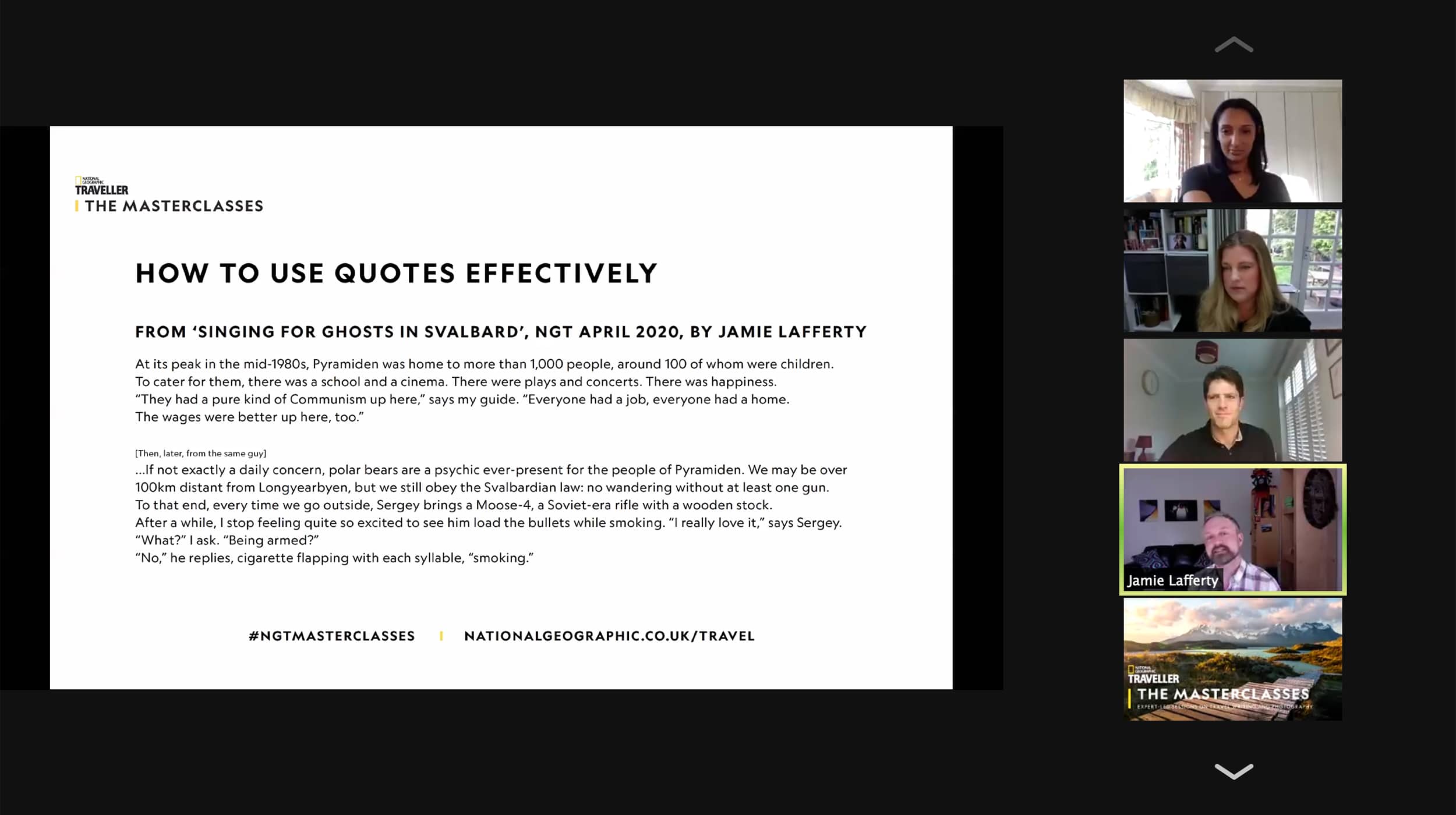
The Masterclasses online: what we learned on the first day
On Monday 19 April, National Geographic Traveller (UK) kicked off The Masterclasses online with some of the basics of travel writing and photography.
National Geographic Traveller associate editor Sarah Barrell quizzed a panel of travel writers and editors — Adrian Phillips, Amelia Duggan, Jamie Lafferty and Monisha Rajesh — on how to begin, structure and end a travel feature effectively. The following class, all about shooting people and places, saw photographers Yulia Denisyuk, Ben Weller and Karolina Wiercigroch share presentations on their tips and tricks, with National Geographic Traveller art director Becky Redman and art editor Lauren Atkinson-Smith on hand to lead the discussion and answer questions.
Here are some of the best takeaways from the evening:
How to write a travel feature — from start to finish
Grab you readers’ attention in the introduction
“Chuck readers right in the heart of a risky piece of action and ask them to follow you on from there,” said Adrian Phillips — especially if you’re writing in the present tense. Another tip is to start with your very best material, suggested Amelia Duggan: “If it captured your heart, maybe it will capture the imagination of the reader.”
Don’t forget to enjoy your trip
“When I travel, I don’t even think about the writing side of it until I get back,” said Monisha Rajesh. “I like to feel I’m enjoying a trip the way a reader would, and I often find if I get too bogged down in making notes, recording things or looking really hard for them, I miss the really natural detail that just comes to you as you just observe things as a traveller.”
Quotes should elevate your readers’ understanding of a destination
“You should never quote anyone who’s giving you Wikipedia-style facts,” said Jamie Lafferty — save the history dump for elsewhere in the feature. And when you’re interviewing someone, he said, make sure to make a note of the time on the recorder when you hear something interesting. Transcribing can be torturous, and that can help save time.
Having strong themes in your piece can help your ending
“The way I tackle endings is by having clear themes throughout the piece and being clear about those at the start,” said Amelia Duggan, “so that, when I get to the end, there are some loose ends to just tie up.” When you reach the end of your feature, she added, think about whether you’ve done the destination justice, and let that guide you to a safe landing.
How to shoot people and places
Always ask for permission
“The camera doesn’t lie,” said Yulia Denisyuk. “When you’re stealing somebody’s image, the camera sees that.” With that in mind, ask permission before taking someone’s picture and make sure everyone’s aware of what’s happening. If you’re unsure how to do it, try learning a few phrases in the local language — a little effort goes a long way.
Develop a relationship with your destination
“Return to a place at different times of day, different seasons, keep in touch with contacts, let them know what you’re up to and ask them to keep you informed,” said Ben Weller. It will help you understand the people and place better, so pursue a long-term project in one place if you can — you don’t always have to travel to take travel photographs.
Shoot people while they do something they love
“That will probably make them forget about you and your camera, which is what I want,” said Karolina Wiercigroch. Giving them something to do, even if it’s just serving tea, can also help: they won’t have to pose, and it’s a great way to introduce more colour to your story, showcasing the person, the environment and the craft.
Shoot your local area
National Geographic Traveller art editor Lauren Atkinson-Smith said the magazine is always looking for local photographers — and even more so right now, as travel isn’t really an option at the moment. “It also adds something,” she said. “If you know the place, you might have some great inside knowledge about where to find the best light at a certain time of day and things like that.”
Want to learn more? There’s still time to book a ticket for Tuesday’s and Wednesday’s sessions — visit the National Geographic Traveller website for more information.
